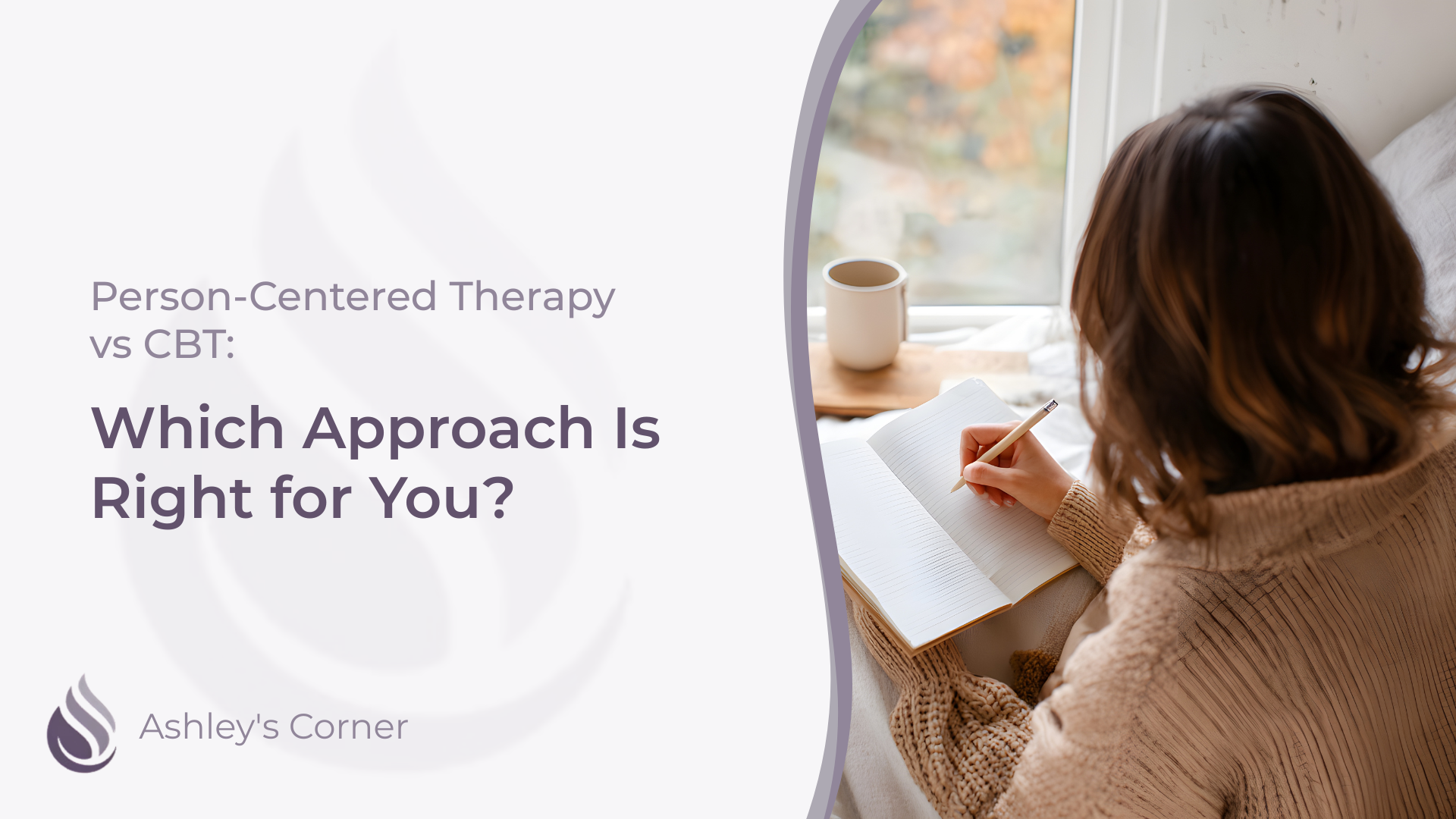
25 Oct Person-Centered Therapy vs CBT: Which Approach Is Right for You?
Choosing the right therapeutic approach can be challenging, especially when comparing person-centered therapy vs CBT. While both methods are effective, they differ significantly in style, focus, and how they guide clients toward change. Understanding these differences can help you decide which approach best matches your needs and personality.
Understanding Person-Centered Therapy
Person-centered therapy, developed by Carl Rogers, is built on three key principles: unconditional positive regard, empathy, and congruence. The therapist provides a supportive, non-judgmental environment where clients feel free to explore their thoughts and emotions.
This approach is non-directive, meaning the therapist doesn’t prescribe solutions or homework. Instead, they guide the client toward self-discovery and self-acceptance, fostering long-term emotional growth. In the context of person-centered therapy vs CBT, this method appeals to individuals who value autonomy and a strong emotional connection in the therapeutic relationship.
Understanding Cognitive Behavioral Therapy (CBT)
CBT is a structured, goal-oriented approach that focuses on identifying and changing unhelpful thought patterns and behaviors. Clients work with the therapist to challenge distorted thinking, develop coping strategies, and engage in behavioral exercises between sessions.
In comparing CBT vs person-centered therapy, CBT is often preferred by individuals seeking a clear plan of action and measurable progress within a defined timeframe.
Key Differences: Person-Centered Therapy vs CBTKey Differences: Person-Centered Therapy vs CBT
1. Therapy Structure:
- Person-Centered: Unstructured, client-led sessions.
- CBT: Structured sessions with set goals and homework.
2. Focus:
- Person-Centered: Self-exploration, emotional growth, and self-acceptance.
- CBT: Problem-solving, changing specific thoughts and behaviors.
3. Role of Therapist:
- Person-Centered: Supportive guide and empathetic listener.
- CBT: Active coach and strategist.
4. Best For:
- Person-Centered: Those seeking deeper self-understanding and emotional connection.
- CBT: Those seeking practical tools to address specific problems like anxiety or phobias.
Who Can Benefit from Each Approach?
Person-Centered Therapy is ideal for individuals who:
- Want to feel heard, understood, and supported without judgment.
- Value self-direction and emotional exploration.
- Are looking to build self-esteem and authenticity.
CBT is a good fit for individuals who:
- Prefer a results-oriented approach.
- Want to learn practical skills to manage symptoms quickly.
- Are dealing with targeted issues such as anxiety, depression, or obsessive thoughts.
Combining Both Approaches
Some therapists integrate both methods, blending the emotional depth of person-centered therapy with the practical tools of CBT. This hybrid approach can offer the best of both worlds—providing emotional safety while working toward actionable change.
If you’re unsure which side of the person-centered therapy vs CBT discussion you align with, consider talking with a therapist who can tailor the process to your personality, preferences, and goals.
Find the Right Approach for You
Deciding between person-centered therapy vs CBT isn’t about choosing the “better” method—it’s about finding what truly supports your emotional growth and feels right for your unique journey. When you take the time to listen to yourself, you can better understand whether you need the open, empathetic space of person-centered therapy, the structured tools of CBT, or a thoughtful blend of both.
Still Waters Team offers a warm, collaborative approach that helps you explore both styles so you can discover what works best for you. If you’re ready to take that step toward clarity, healing, and personal growth, book your session with Dr. Shaw today.




No Comments